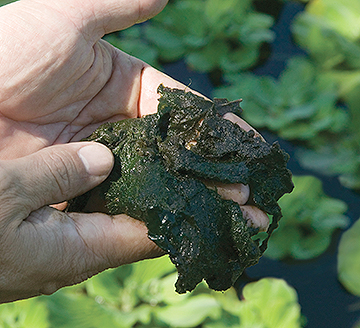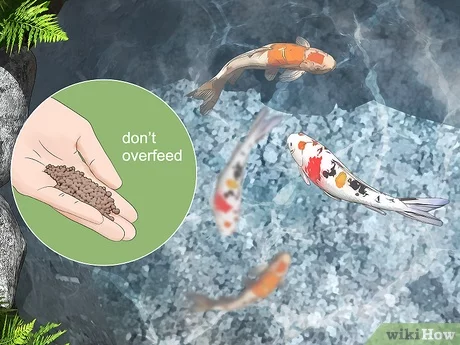Algae growth in ponds is a common issue that many pond owners face. Not only does it make your pond look unattractive, but it can also harm fish and other aquatic life. While there are chemical solutions available to combat algae, many people prefer natural methods to keep their pond clean and healthy. In this article, we will discuss some effective ways to keep algae out of your pond naturally.
1. Proper Plant Coverage
One of the most effective ways to prevent algae growth in your pond is by ensuring proper plant coverage. Aquatic plants help to shade the water, reducing the amount of sunlight that reaches the algae. Plants like water lilies, lotus, and water hyacinth not only add beauty to your pond but also act as natural filters, absorbing excess nutrients that algae thrive on.
2. Maintain a Balanced Ecosystem
Creating a balanced ecosystem in your pond is essential for keeping algae at bay. Make sure you have a good mix of plants, fish, and beneficial bacteria. Fish like koi and goldfish can help control algae by eating it, while beneficial bacteria break down organic matter and prevent nutrient buildup that fuels algae growth.
3. Use Barley Straw
Barley straw is a natural and effective way to control algae in ponds. When barley straw decomposes in water, it releases compounds that inhibit algae growth. Simply place a bale of barley straw in your pond and allow it to float or sink. Over time, the straw will break down, releasing its algae-fighting properties.
4. Install a Waterfall or Fountain
Adding a waterfall or fountain to your pond not only enhances its aesthetic appeal but also helps to oxygenate the water. Algae thrive in stagnant water, so by keeping the water moving and aerated, you can discourage algae growth. The movement of water also helps to distribute beneficial bacteria throughout the pond, further inhibiting algae.

Credit: www.thepondguy.com
5. Regular Maintenance
Regular maintenance is key to keeping algae out of your pond naturally. Remove any debris such as leaves and twigs that fall into the water, as they can contribute to nutrient buildup. Consider investing in a pond skimmer to help remove floating debris and keep the water surface clean. Routine water testing and monitoring can also help you catch any imbalances early on.
6. Avoid Overfeeding Fish
Overfeeding fish can lead to excess nutrients in the water, which algae feed on. Be mindful of how much you feed your fish and avoid overfeeding. Feed them small amounts at a time and only what they can consume in a few minutes. This will help prevent leftover food from decomposing and contributing to algae growth.
7. Use Natural Algae Control Products
There are natural algae control products available in the market that can help keep algae in check without the use of harsh chemicals. Products like beneficial bacteria supplements and enzyme treatments can aid in breaking down organic matter and reducing nutrient levels in the water, making it less hospitable for algae.
8. Provide Adequate Shade
Algae thrive in sunlight, so providing adequate shade in your pond can help prevent algae growth. You can use floating plants, water lilies, or even strategically placed rocks or structures to create shaded areas in your pond. This will not only help control algae but also create hiding spots for fish and other aquatic life.

Credit: www.tetra-fish.com
9. Consider Adding Aquatic Animals
Introducing certain aquatic animals like snails, tadpoles, or even ducks to your pond can help keep algae in check. These animals feed on algae and help maintain a natural balance in the ecosystem. Just be sure to research and choose species that are compatible with your pond and won’t disrupt the existing ecosystem.
10. Monitor Water Temperature
Algae tend to thrive in warmer water, so monitoring and controlling the water temperature in your pond can help prevent algae outbreaks. If possible, try to keep the water temperature below 75°F (24°C) to discourage algae growth. Using shade, aeration, and proper plant coverage can also help regulate water temperature in your pond.
By implementing these natural methods, you can effectively keep algae out of your pond and maintain a healthy and balanced aquatic environment. Remember that consistency is key, and regular monitoring and maintenance will go a long way in preventing algae growth. Enjoy a clean and vibrant pond by incorporating these natural solutions into your pond care routine!





